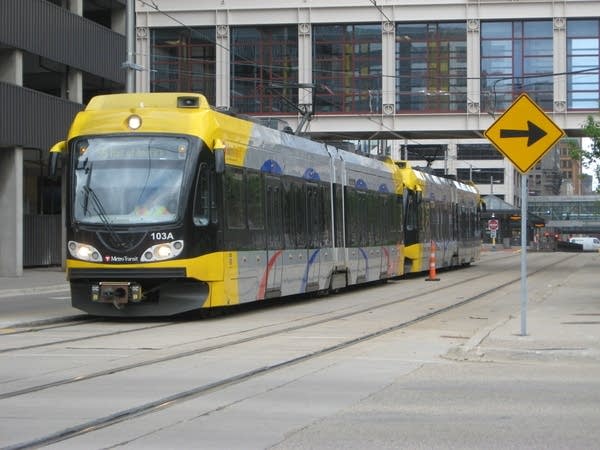Central Corridor report: Businesses' revenue losses would be minimal
Go Deeper.
Create an account or log in to save stories.
Like this?
Thanks for liking this story! We have added it to a list of your favorite stories.

A report on the Central Corridor light rail project says the average impact of construction on businesses in the area will be minimal.
The report estimates that the average revenue loss among small businesses would be 0 to 2.5 percent during the construction period from 2011 to 2014, when the light rail line is completed.
The Metropolitan Council and the Federal Transit Authority released a draft of the Supplemental Environmental Assessment reviewing the potential loss of business revenue after a judge ruled last month that the overall environmental study was "deficient." The public will have an opportunity to comment on the draft assessment.
U.S. District Judge Donovan Frank said the study failed to consider how construction would affect businesses.
Turn Up Your Support
MPR News helps you turn down the noise and build shared understanding. Turn up your support for this public resource and keep trusted journalism accessible to all.
The report notes that some businesses will see significant sales revenue losses, but says others will experience increases as a result of construction spending during the project.
"There is no way to predict what any one business will experience during the construction project," the report says.
But business owners are questioning the estimate of the average revenue loss given in the report.
Steve Bernick, part owner of Milbern Clothing Company on University Avenue, said he expects revenue losses to be more like 20 percent to 40 percent during construction, based on his own calculations and examples of impacts other transit projects have had elsewhere.
Limited street parking and traffic restrictions prohibiting left turns will make it harder for customers to reach the men's clothing store, he said.
"People have to go around the back, going half a mile to a mile out of their way to get to you. And that's the big problem," Bernick said.
Two public hearings will be held March 16 for officials to take comments on the report before a final draft is issued.
The 88-page report divides the potential impacts into seven categories: pedestrian access, vehicle access, parking, utility shutoffs, noise and vibrations, dust and dirt, and visual impacts.
Jack McCann, a partner with Update Company, which leases space to businesses and nonprofit groups in the area, said a 2.5 percent average revenue loss is completely unrealistic.
"There's seven different impacts, and they're basically all going to come into play on just about every piece of property," McCann said.
McCann acknowledged that it's difficult to know exactly what the revenue impacts will be. But he said business owners' estimates would be more accurate than the 0 to 2.5 percent average the Metropolitan Council and Federal Transit Authority came up with.
"We don't have the ability to put together a document this size, but we know shooting from the hip that it's going to be a larger impact than that," he said.
Editor's Note: An earlier version of this article incorrectly stated that the Supplemental Environmental Assessment had been completed.




